Here in Cheshire, CT, hard water is a persistent issue, as is the case in much of the US. Most groundwater sources pick up minerals as they pass through subterranean rock. As a result, hard water affects both municipal water supplies and private wells. Water softening systems offer home and business owners a way to solve their hard water problems. Here’s a complete guide to how water softeners work and why they’re helpful.
What Is Hard Water?
Hard water is any water containing a high concentration of dissolved minerals. While that may sound innocuous, it can cause a variety of problems. For example, if your dishwasher leaves a powdery residue on your glassware, it’s probably due to hard water as the minerals in the water build up on the surface of the glass. Hard water also interferes with soaps and detergents, preventing them from lathering and rinsing completely.
Hard water can also cause problems for your plumbing. If you spot any white, chalky buildup on your faucets and sinks, it’s because of hard water. That same buildup will happen inside your plumbing, causing unnecessary wear and tear and contributing to clogs. Hard water can also lead to mineral deposits inside your water heater. That can reduce its capacity and eventually lead to its premature failure. These reasons are why homes and businesses with a hard water problem typically have a need for more frequent plumbing repair services.
Measuring Water Hardness
You can test your water for hardness using items you already have in your home. However, it’s an imprecise test that will only give you a decent idea of whether you have hard water. You need a clean, empty, clear bottle with a cap and some liquid soap to do the test. Fill the bottle with tap water to one-third of its capacity. Then, let the water settle until it’s completely clear. Next, add two or three drops of soap and seal the bottle. Shake the mixture for a few seconds. If you don’t have particularly hard water, the soap should produce bubbles on the water’s surface. The water itself should remain clear. However, if the water gets cloudy and there are not many bubbles, it’s a good sign that you have hard water.
If you want a more precise answer, purchase a hard water test kit from your local home improvement store. Most such kits come with simple test strips and a color chart to help you interpret the results. To perform the test, fill a glass with your tap water and submerge a test strip in the water. The test kit should tell you how long to leave the strip submerged. At the end of the test period, remove the strip and compare its color to the included chart. The chart should show a water hardness scale measured in grains per gallon (GPG) or parts per million (PPM). The hardness scale is:
- Less than one GPG or 17.1 PPM is soft water
- Between 1 and 3.5 GPG or 17.2 and 60 PPM is slightly hard water
- Between 3.5 and 7 GPG or 60 and 120 PPM is moderately hard water
- Between 7 and 10 GPG or 120 and 180 PPM is hard water
- Over 10 GPG or 180 PPM is very hard water
How a Water Softener Works
A water softener is a device installed in a home or building at its water supply entry point. There, it can treat the water before it moves through the building’s plumbing system. Water softeners typically use salt and exchange mineral ions in the water with sodium ions. They usually have a tank full of resin beads to facilitate the exchange.
The process begins with hard water flowing into the softener’s resin bead tank. The beads are negatively charged, with positively charged sodium ions attached. As the hard water passes through, the negatively charged beads attract positively charged mineral ions from the water. Fortunately, the ion charge of the sodium ions is far weaker than the minerals’ charge. That forces the beads to shed their sodium ions into the water and retain the mineral ions. The result is softer water that can then enter the building’s plumbing system.
The resin beads can’t capture an endless amount of minerals, however. That’s where another process in the water softener comes in and is called the regeneration cycle. Water softeners contain a separate tank called a brine tank. There, the system stores salty water that periodically gets used to flush out the resin bead tank. When that happens, the salty water rinses the mineral ions off the beads and recharges them with sodium ions. Depending on the system, the regeneration process may occur every few days or as infrequently as once a week.
To keep a water softener system running, you must periodically add salt to its brine tank. Most systems require salt refills every one or two months. The majority of water softeners perform equally well with sodium chloride (NaCl) or potassium chloride (KCl) in their brine tanks. However, you should always consult your water softener’s manual for the proper consumables.
Won’t a Water Softener Create Salty Water?
After finding out how water softeners work, many people question if the water softening process will result in salty water. The answer is a bit complicated. Water softeners indeed add some sodium to the water they treat. However, the amount is so trivial that it’s imperceptible to your taste buds. But it is something that people on low-sodium diets should take note of and consider when preparing meals.
To determine how much sodium a water softener would add to your water, you must start with your water’s hardness. That’s because more minerals in your water means using more sodium to replace them. Fortunately, there’s a handy formula you can use. Take your water’s hardness in GPG and multiply it by 1.89. That will tell you how many milligrams of sodium a water softener would add to an 8-ounce glass of water. You can use that information along with your daily water intake to decide if the extra sodium in the water is a problem. You may wish to consult your doctor for more specific guidance.
If installing a water softener would add more sodium to your water than you’re comfortable with, you have two options. One option is to use KCl in your softener. It’s the same substance you’ll find in commercial salt-replacement products. It’s usually safe for anyone on a low-sodium diet. Or you could install a reverse-osmosis water filtration system to work with your water softener. It would remove the sodium from the water entirely. You can install such a system under your kitchen sink to provide sodium-free drinking water.
Water Softener Experts
F.F. Hitchcock Plumbing, Heating & Cooling is a local Cheshire business that has been serving customers since 1870. We offer residential and commercial services, including plumbing, HVAC, electrical, roofing, and more! We provide affordable water treatment services, including installing, repairing, and maintaining water softeners. We’re also Better Business Bureau accredited with an A+ rating and have a long list of positive customer reviews. If you need a water softener in Cheshire or any of our other services, call F.F. Hitchcock Plumbing, Heating & Cooling today!








